The enormous comfrey plant buzzed with activity during a warm afternoon. Bumble bees and long-horned bees worked the purple flowers. There was nary a honeybee in sight, despite our two hives in our backyard and at least five at our neighbor’s across the street. It reminded me that these hard-working native bees are often the unsung heroes of the garden.
For nearly two decades, we’ve been warned that honey bee populations were at dire risk due to colony collapse disorder (CCD), and we were all going to starve to death. But is that still the case and, in reality, how important are honey bees?
It might come as a surprise to some, but honey bees aren’t the only players in the pollination game. There are 20,000 known species of bees throughout the world, with 4000 residing within the United States, and obviously plants were pollinated long before Europeans brought honeybees to the continent.
In reality, at least according to the USDA who has a handle on such things, native bees are responsible for 80 percent of the pollination of all of the flowering plants throughout the world. This includes most of the commercial food crops.
Granted, honey bees are champions at intensive, focused pollination efforts for some crops, such as almonds, but native bees are well-equipped for pollinating most everything, and in reality, are more efficient in the process. Native bees often have fuzzier bodies that are better at collecting pollen and distributing it to the next flower, plus they tend to work more during colder and wetter conditions. In the early spring when my honey berries or Nanking cherries are blooming, it’s the bumble bees that are on the flowers. The honey bees are hunkered in their hive waiting for better weather.
What’s even more fascinating is how some bumble bees utilize what is called “buzz pollination,” which is when the rapid movement of the bee’s wings creates a specific vibration that causes the flower to release its pollen. This is the only way crops such as blueberries, cranberries, tomatoes, eggplants, potatoes and some beans can be pollinated, meaning the honey bees can’t do the job.
Don’t get me wrong, I’m a huge fan of honey bees and the honey they produce. I used to bake four loaves of bread each week using our honey, plus it’s my go-to for everything from treating a wound to taking a teaspoon of honey for a cough. (Oh, and making mead. That’s good stuff, but I’ll share that story another day.)
I started my first hive in 1996 when I lived outside of West Glacier, Montana after I saw one honey bee the previous summer. Since my primary focus was gardening, I decided I needed to bring in honeybees. Of course, now I know that the native bees were more than sufficient, but I thought I was benefiting the overall system. Since then, I’ve always had at least one hive, and my husband was eventually hooked by the hobby increasing our little apiary to nine hives one summer.
Beekeeping is a fascinating endeavor, and has taken off in popularity particularly after the “save the bees” narrative that began around 2006 with the CCD issue, but we need to look at the big picture. According to the National Honey Board, there are approximately 1600 commercial apiaries in the United States versus 112,000-115,000 hobbyist (those who have fewer than 25 hives). Plus, there are more honey bee colonies all the way around. In 2008, there were 2.3 million commercial colonies in the country. In 2023, there were 2.68, which was actually down a smidge from the previous year. This isn’t even counting the hobbyists’ numbers. While not without challenges, the honey bees are back.
While I don’t believe hobbyists make a significant impact on the commercial aspect of honey sales, they do when it comes to the prices of the honeybees themselves, and pretty much everything else bee related. It is simple supply and demand. There is also a concern that hobby beekeepers may take the same level of care of their bees when it comes to pests and diseases. Diseases like foul brood can potentially devastate commercial hives, and it’s a different ballgame when your livelihood is on the line. This is why commercial beekeepers are diligent about hive health, while a hobbyist may be more inclined to let things go.
So while keeping bees is a noble and satisfying hobby, we should keep bees because we enjoy it, and not worry about saving the honey bees to preserve our food systems. The native bees can handle much of it, and whatever we do to benefit them, is good for the honey bees, too.
Here are a few wise bee practices that benefit both native bees and honey bees:
~ Don’t poison your lawn. While it’s counterintuitive to the standard suburban ritual of maintaining a weed-free landscape, dandelions are excellent early season nectar source. Our backyard is slowly reverting to prairie with scarlet globe mallow and other native plants creeping in from the neighboring field, and I cannot be more delighted.
~ Be judicious on the pesticides. In a perfect world, the balance between pests and beneficial insects would make using chemicals of any sort unnecessary, but we know that’s not the case. When it comes to pests in the garden, my best advice is to try the most non-poisonous means first. Floating row covers can serve as a barrier throughout the summer, and a high pressure blast of water or hand-picking is fairly effective to eliminate some pests, like aphids, at times. Remember, even if a product is organic, it can kill bees, so use them sparingly.
~ Provide a water source if there is nothing natural nearby. Whether it’s a bird bath or occasionally turning on the sprinkler, native and honey bees both need water. We’ve had the honey bees use hanging laundry as a water source when we failed to have something out for them.
~ Keep it a little messy. Many native bees nest in the ground, often in protected areas where there are sticks or shrubs. Plus, they utilize garden debris in the winter for nesting habitat so keeping at least a few of your perennials uncut in the fall is a good thing.
~ Put up native bee houses. This isn’t absolutely necessary because they will find their own homes, but it helps encourage them to be close to where you need them. There are terrific resources such as Crown Bees or Rent Mason Bees that provide native bees and bee boxes.
~ Plant a variety of flowers. Having blooms from spring until a hard freeze provides a food source for them throughout the season. Plus, it certainly makes the garden more interesting.
~ Add native plants to the landscape. It makes sense to offer the food source the native bees know, and native plants often require much less fussing in the garden.
The next time in your garden, count the number of non-honey bees on your flowers. It might surprise you. While honey bees are terrific, let’s give a little love to our versatile and hardworking native bees.




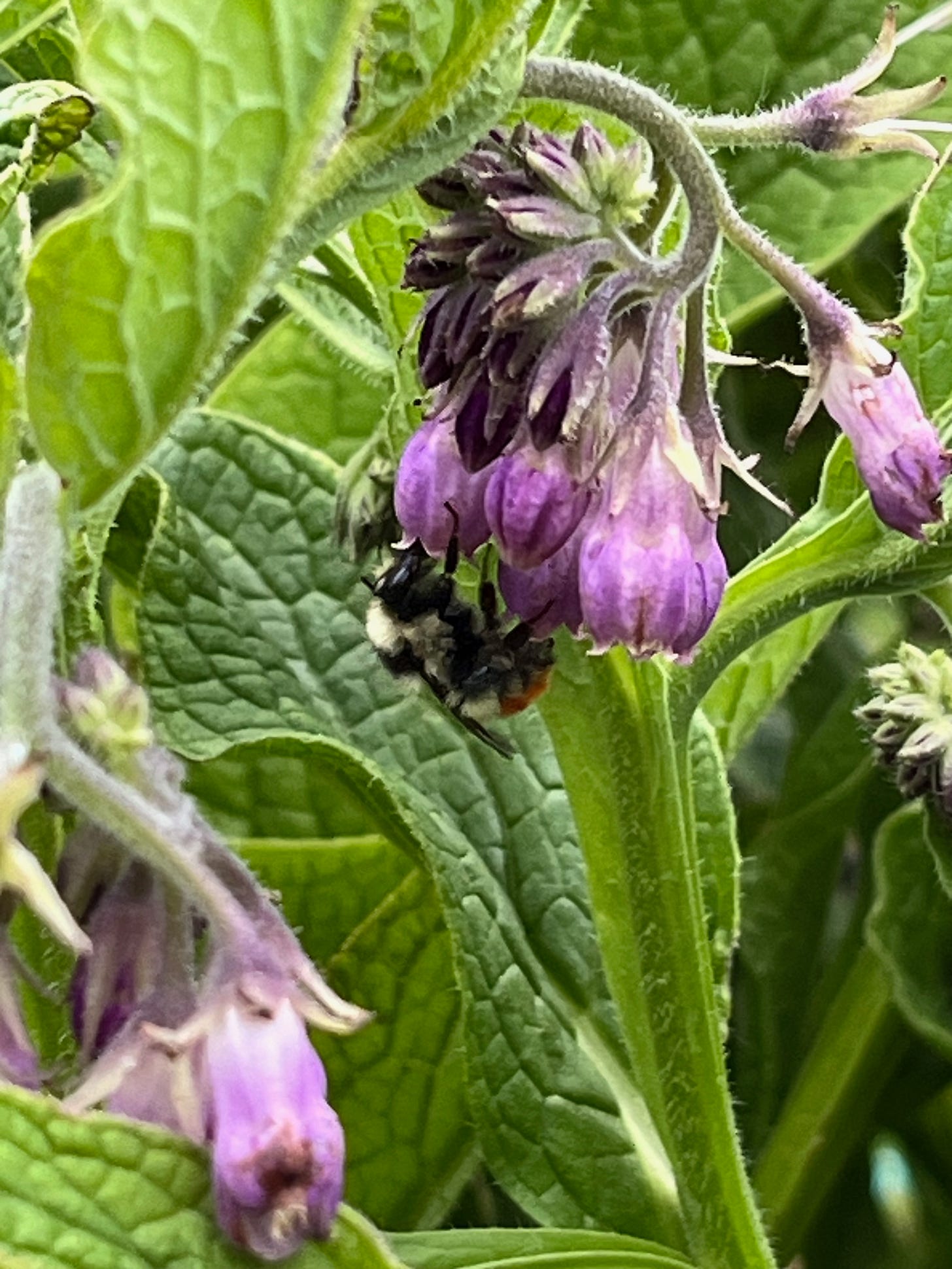
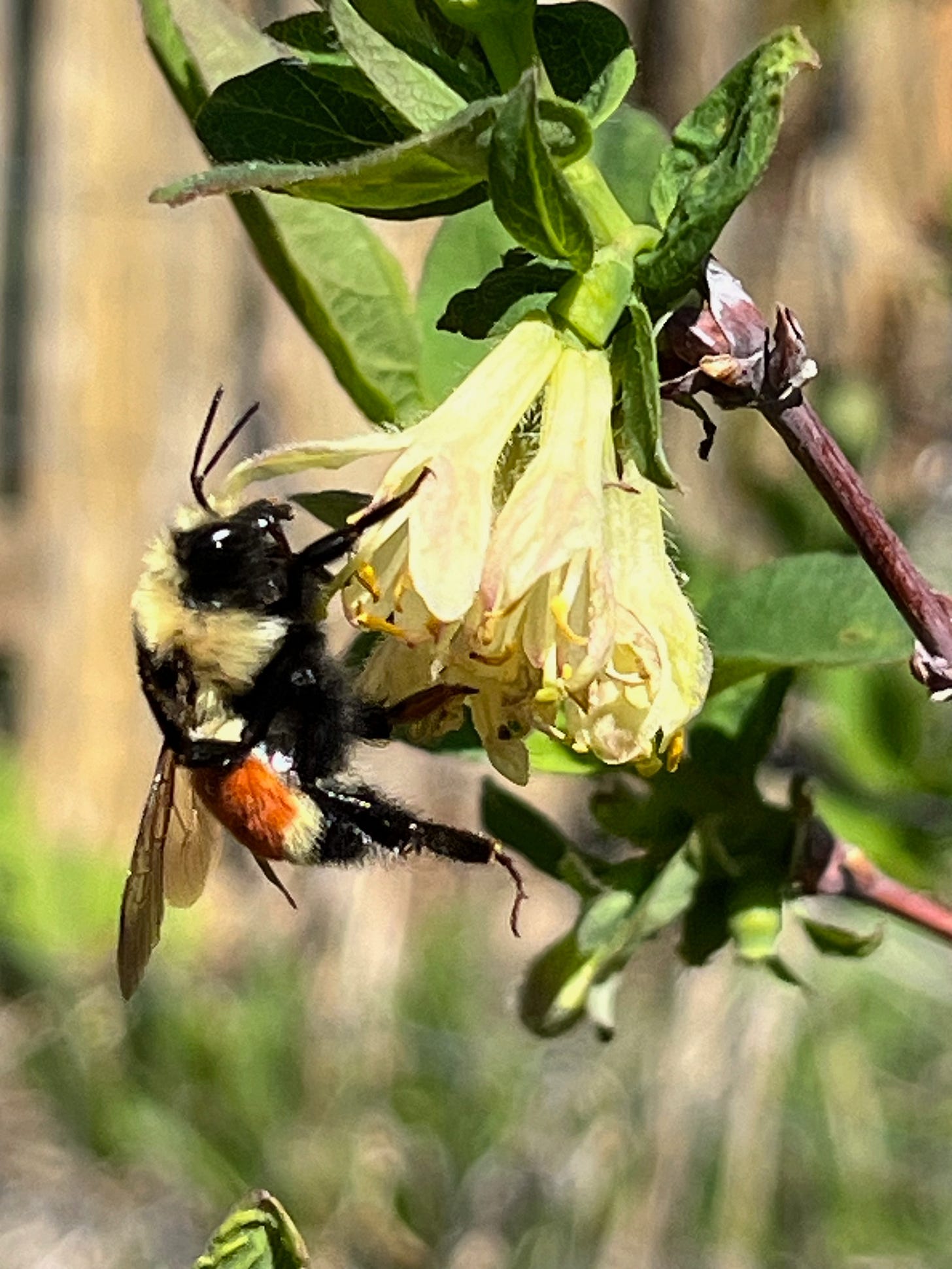



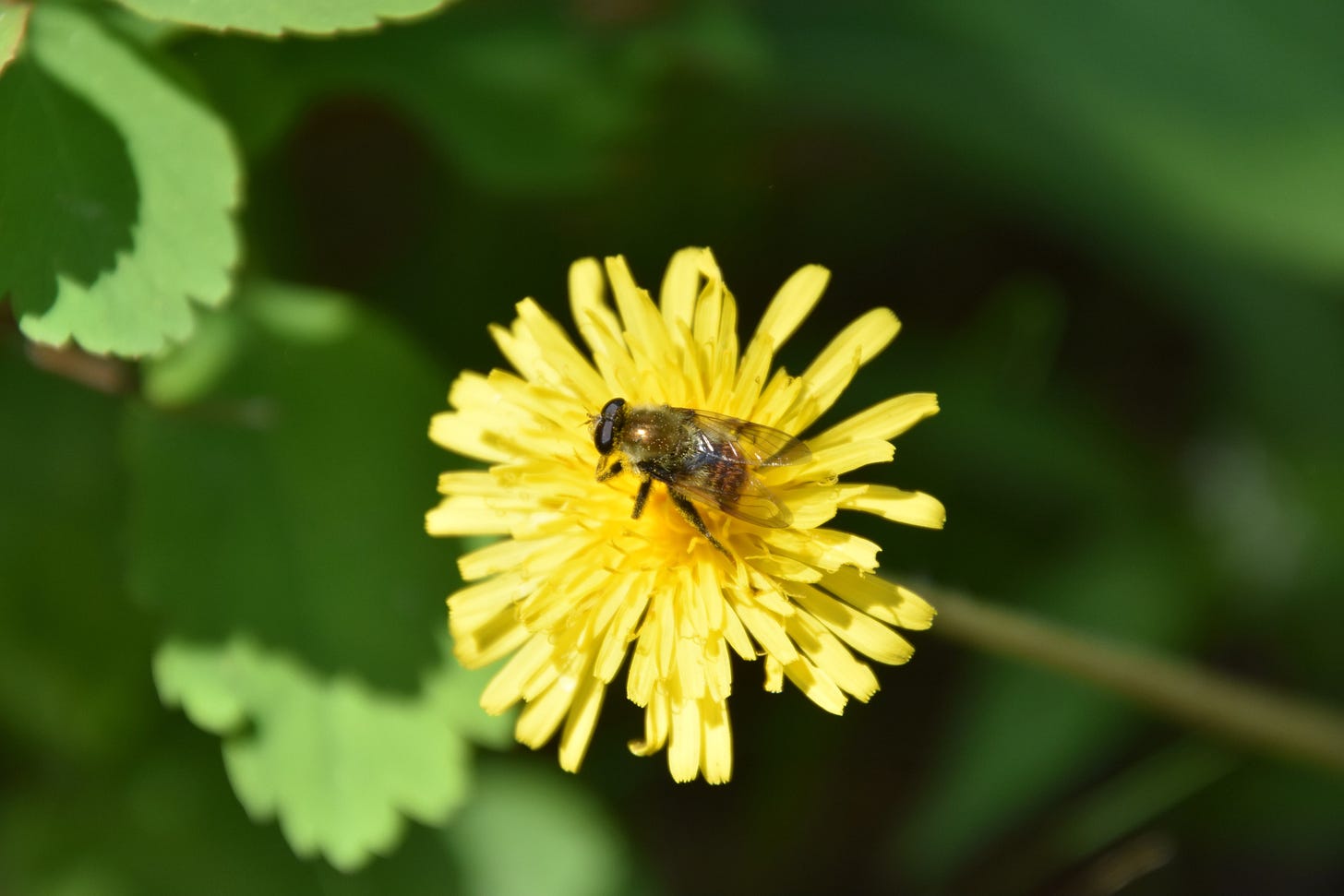
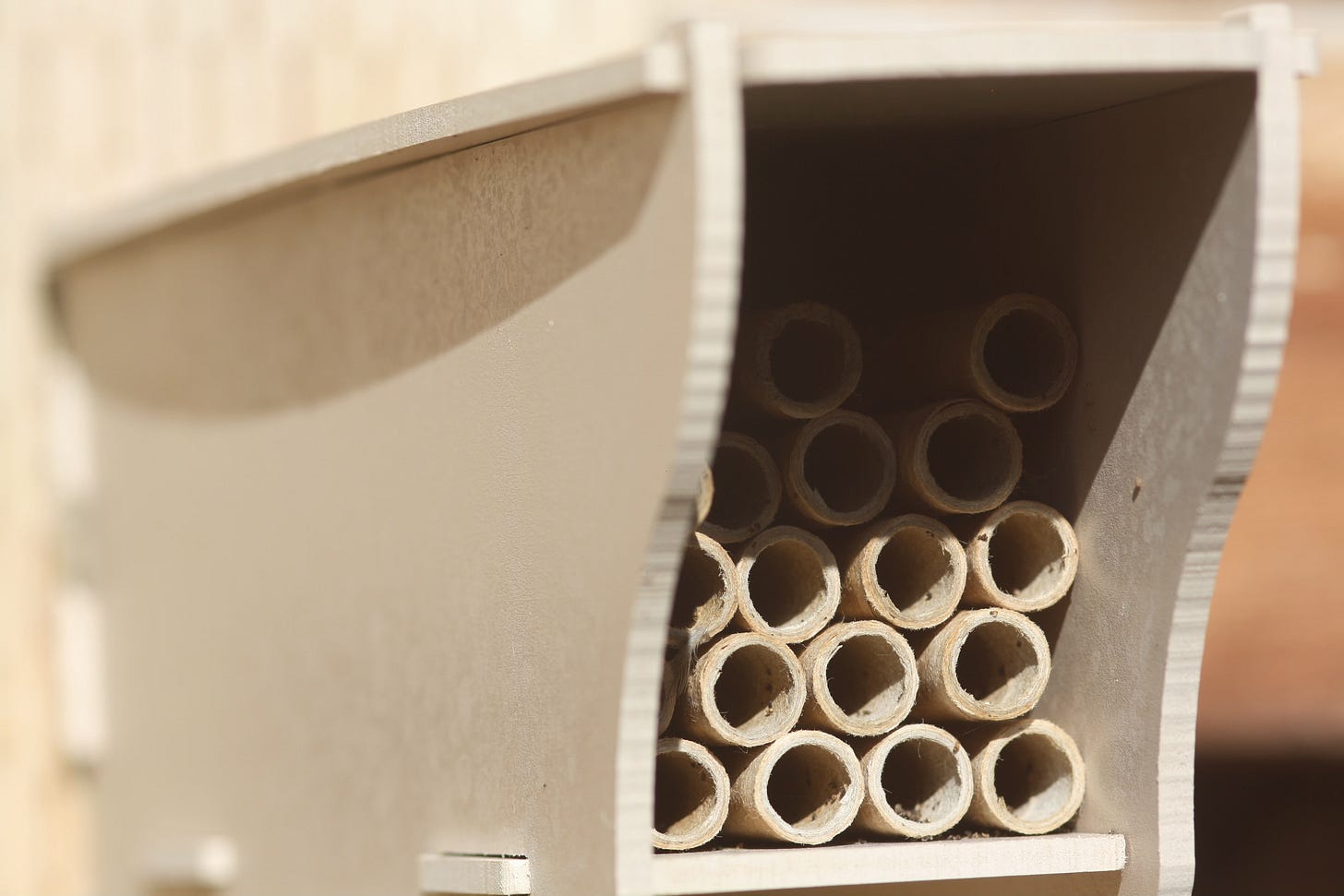
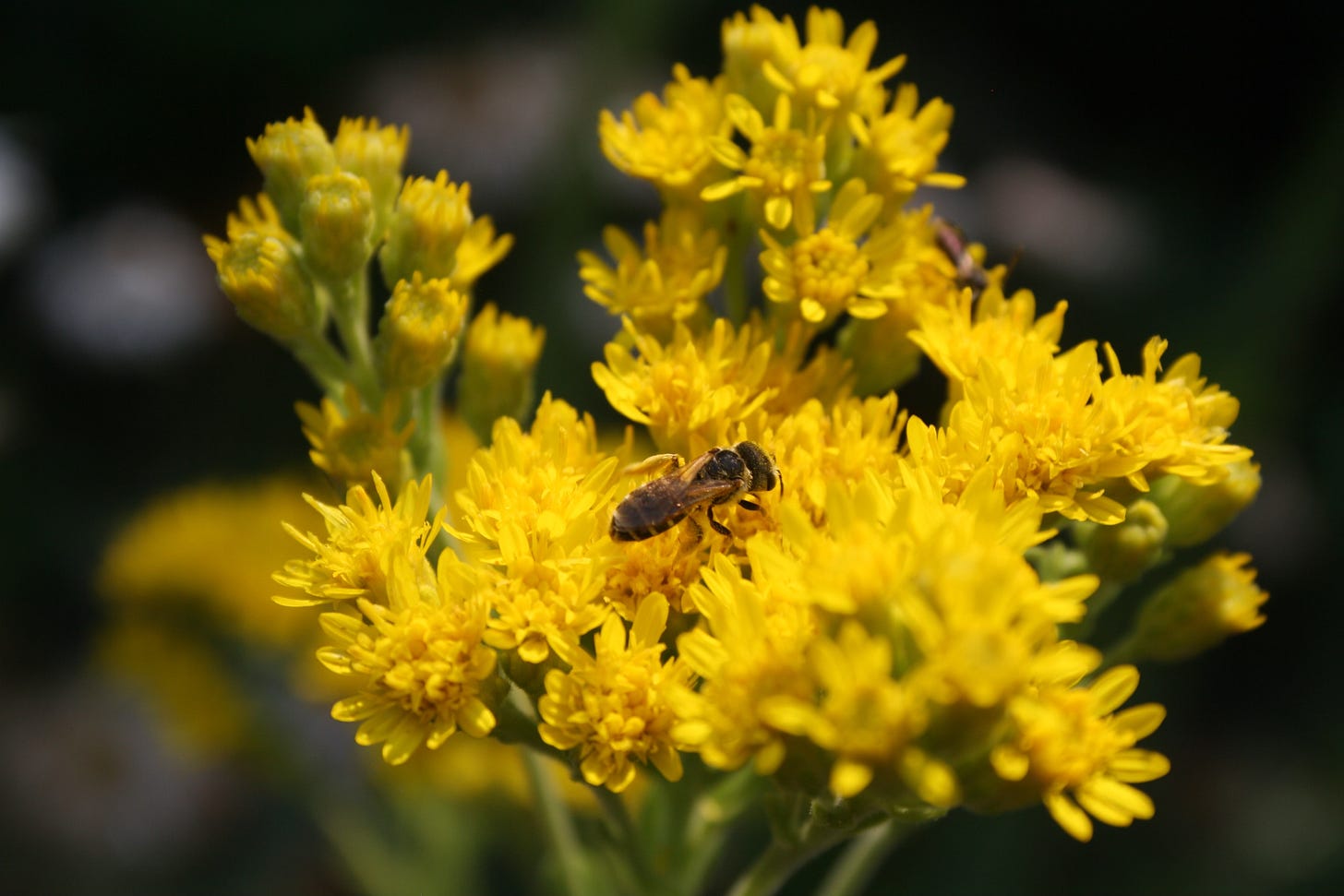
This is very informative. In my part of western Canada, there are some honeybees, but of course, we have plenty of wild bumblebees, hornets, and wasps. I was surprised to learn that even hornets pollinate. Can you imagine a world where only commercial honeybees pollinate everything, and always have? Me neither, because with most of Canada covered in wilderness loaded with flowering plants, it's obviously not true.
Great article. My husband and I put in two wildflower gardens, and boy do we have the bees, hummingbirds, and other pollinators on our little piece of paradise in Michigan. We follow all of the tips you point out and have great results.